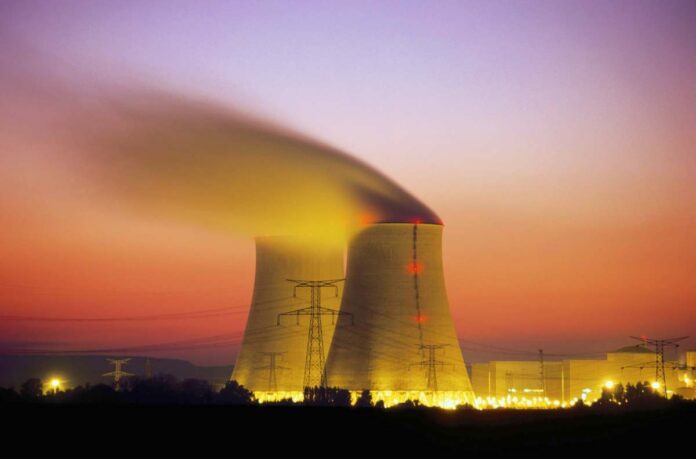Tech companies are betting heavily that nuclear power can help deliver the electricity they need to realize their AI plans. But data centers need power tomorrow, and the nuclear industry isn’t known for its speed.
Trey Lauderdale thinks AI can give nuclear the speed that it needs.
Lauderdale’s obsession with nuclear started close to home. In San Luis Obispo, California, where he lives, he kept running into people who worked at the Diablo Canyon Power Plant. “They’re like the coaches of our flag football team,” he said.
In talking with them, he learned that nuclear power plants are swimming in documents. Diablo Canyon has around 2 billion pages’ worth, he said. Lauderdale, a serial healthcare entrepreneur, had a hunch that AI could help the nuclear industry tame its paper problem.
Lauderdale founded Atomic Canyon a little over a year and a half ago, initially funding it with his own money. The startup uses AI to help engineers, maintenance technicians, and compliance officers find the documents they need.
The startup landed a deal with Diablo Canyon in late 2024. Lauderdale said the deal led to inquiries from other nuclear power companies. “That’s when I knew, as an entrepreneur, we were at a point where we needed to raise a round of capital.”
Atomic Canyon closed a $7 million seed round led by Energy Impact Partners, the company exclusively told TechCrunch. Participating investors include Commonweal Ventures, Plug and Play Ventures, Tower Research Ventures, Wischoff Ventures, and previous angel investors.
When Atomic Canyon first started, its AI engineers tested various models with underwhelming results. “We quickly realized the AI hallucinates when it sees these nuclear words,” Lauderdale said. “It hasn’t seen enough examples of the acronyms.”
But building a new AI model requires massive computing power. So Lauderdale talked his way into a meeting with Oak Ridge National Laboratory, which conducts nuclear research and also happens to have the world’s second-fastest supercomputer. The lab was intrigued by the idea and awarded Atomic Canyon 20,000 GPU hours’ worth of compute.
Atomic Canyon’s models use sentence embedding, which is particularly suited to indexing documents. It tasks them with making a nuclear power plant’s documents searchable using retrieval-augmented generation, or RAG. RAG uses large language models to create responses to queries, but it requires the LLMs to refer to specific documents in an effort to reduce hallucination.
For now, Atomic Canyon is sticking to document search, in part because the stakes are lower.
“One of the reasons we’re starting generative work around the titles of documents is because getting that wrong might cause someone a little frustration. It doesn’t put anyone at risk at the plant,” Lauderdale said.
Eventually, Lauderdale envisions Atomic Canyon’s AI creating “a first round draft” of documents, complete with references. “You are always going to have a human in the loop here,” he said.
Lauderdale didn’t put a timeline on that effort, though. Search is “the foundational layer,” he said. “You have to nail the search.” Plus, given the number of documents in the nuclear industry, “we have a long runway in search alone,” he said.
Tim De Chant is a senior climate reporter at TechCrunch. He has written for a wide range of publications, including Wired magazine, the Chicago Tribune, Ars Technica, The Wire China, and NOVA Next, where he was founding editor. De Chant is also a lecturer in MIT’s Graduate Program in Science Writing, and he was awarded a Knight Science Journalism Fellowship at MIT in 2018, during which time he studied climate technologies and explored new business models for journalism. He received his PhD in environmental science, policy, and management from the University of California, Berkeley, and his BA degree in environmental studies, English, and biology from St. Olaf College.
View Bio


